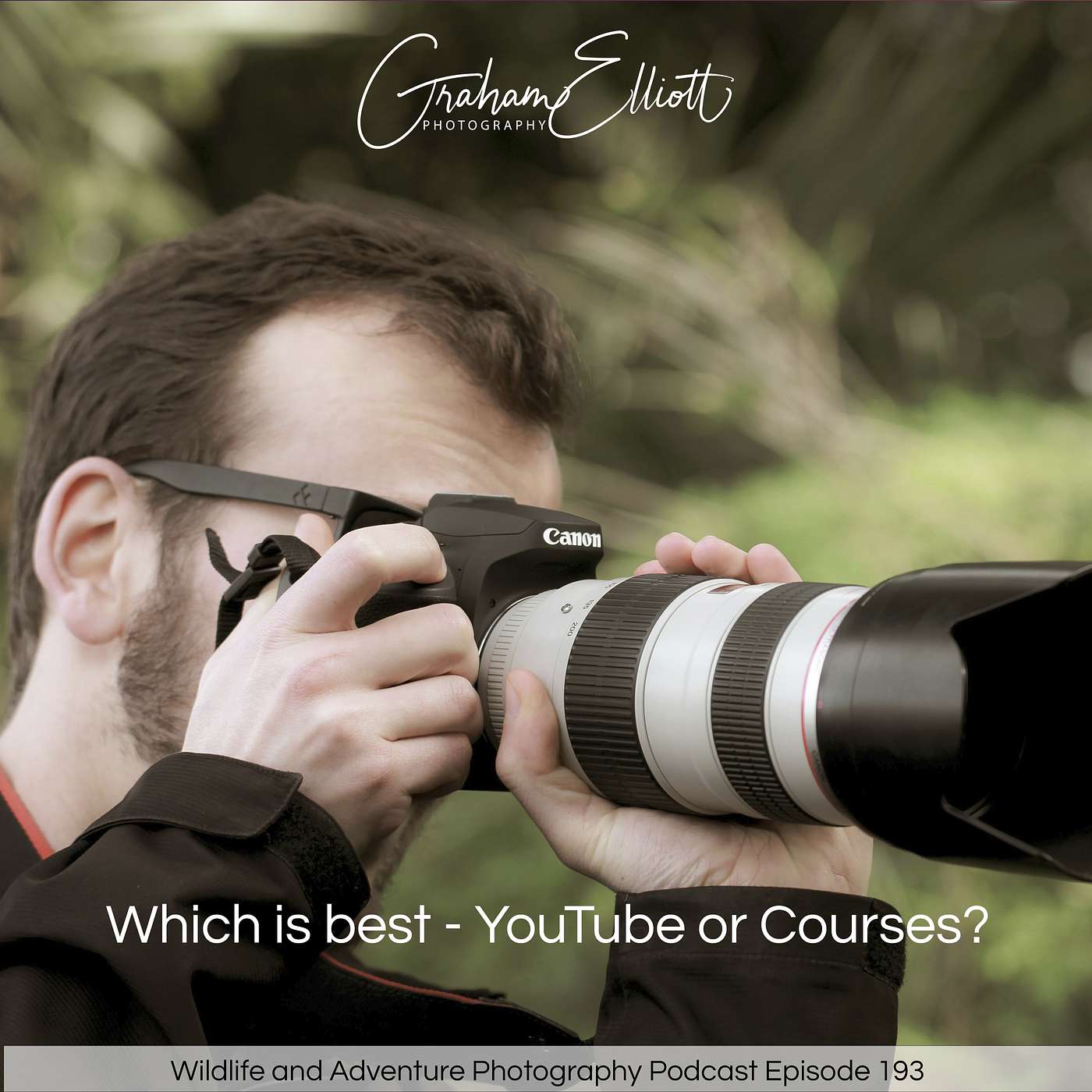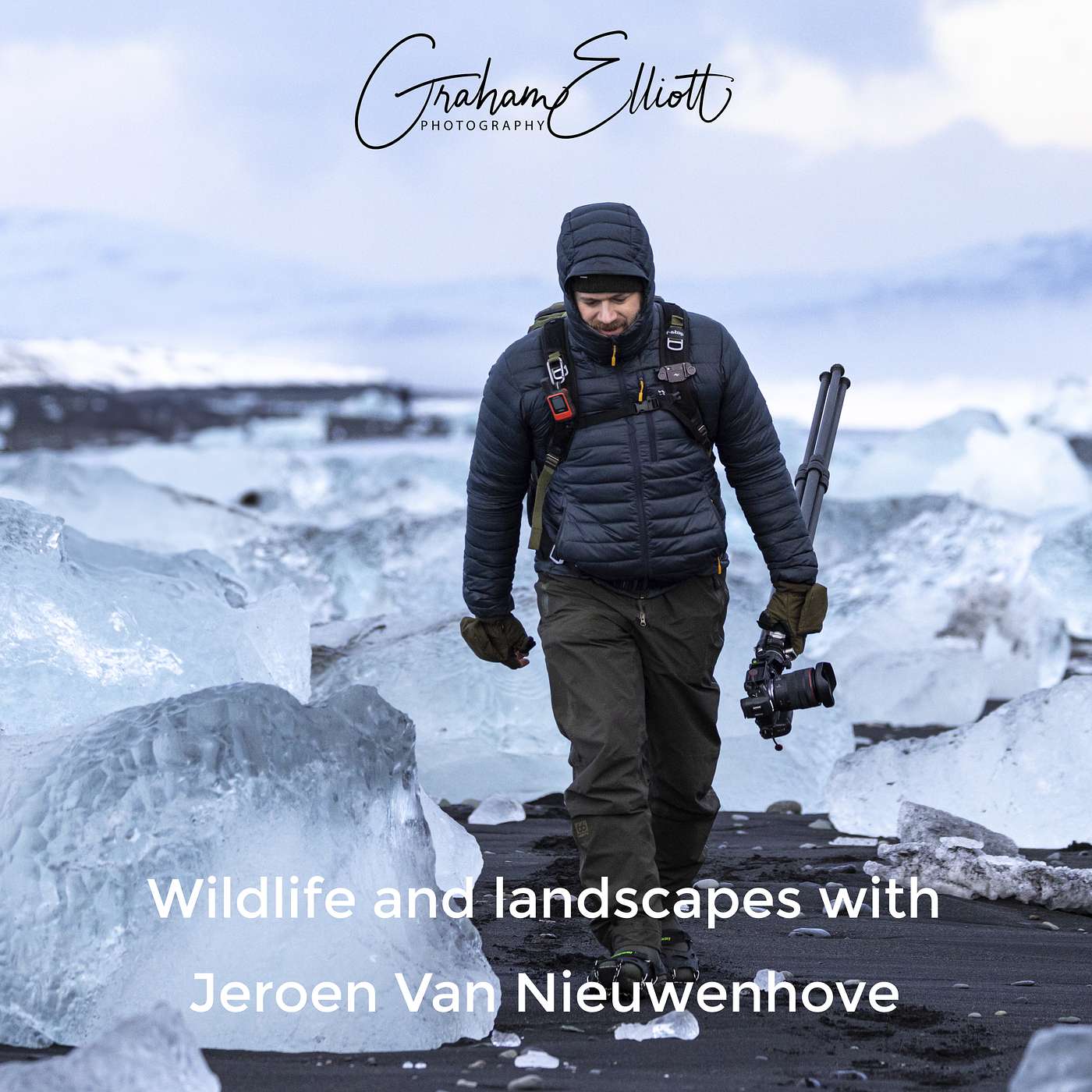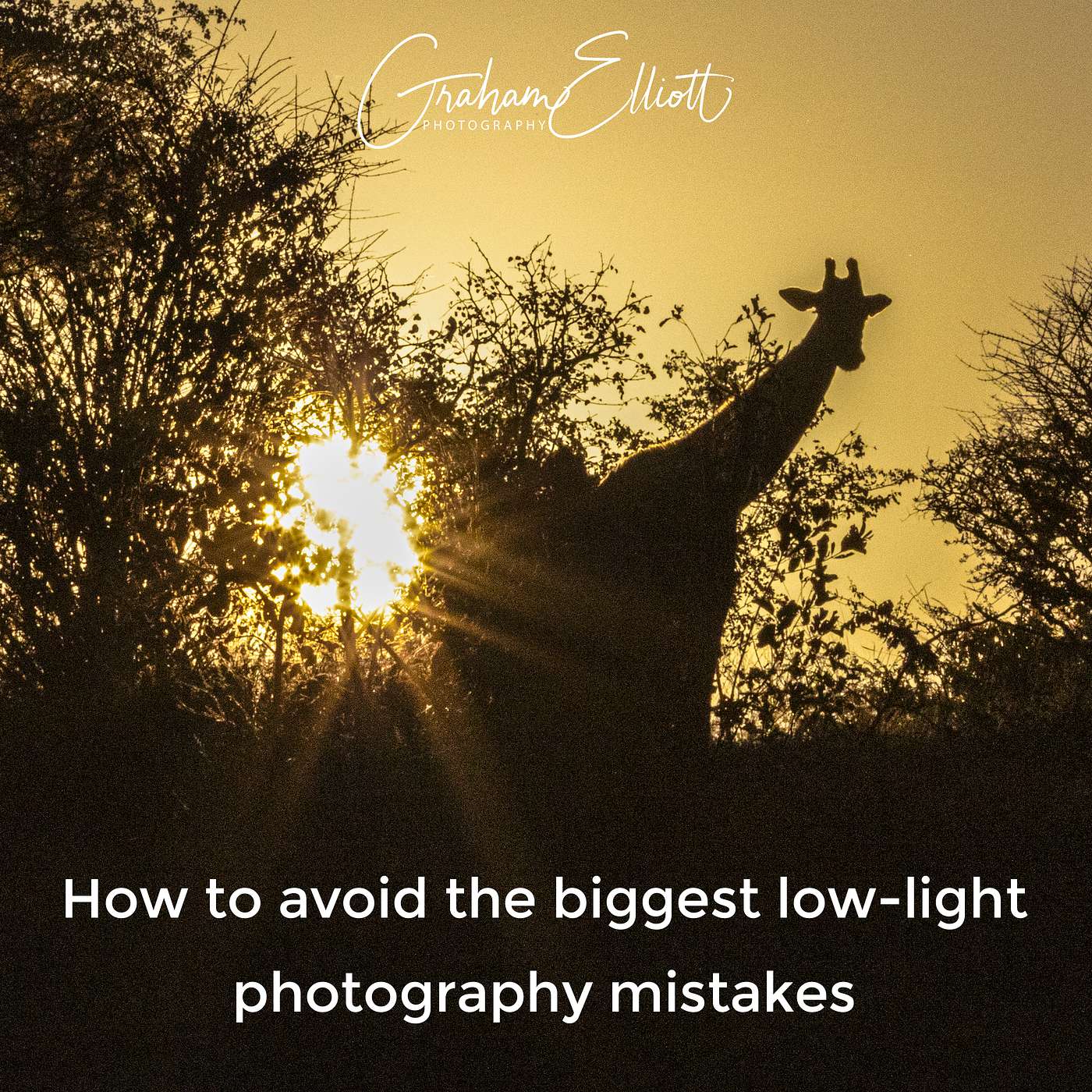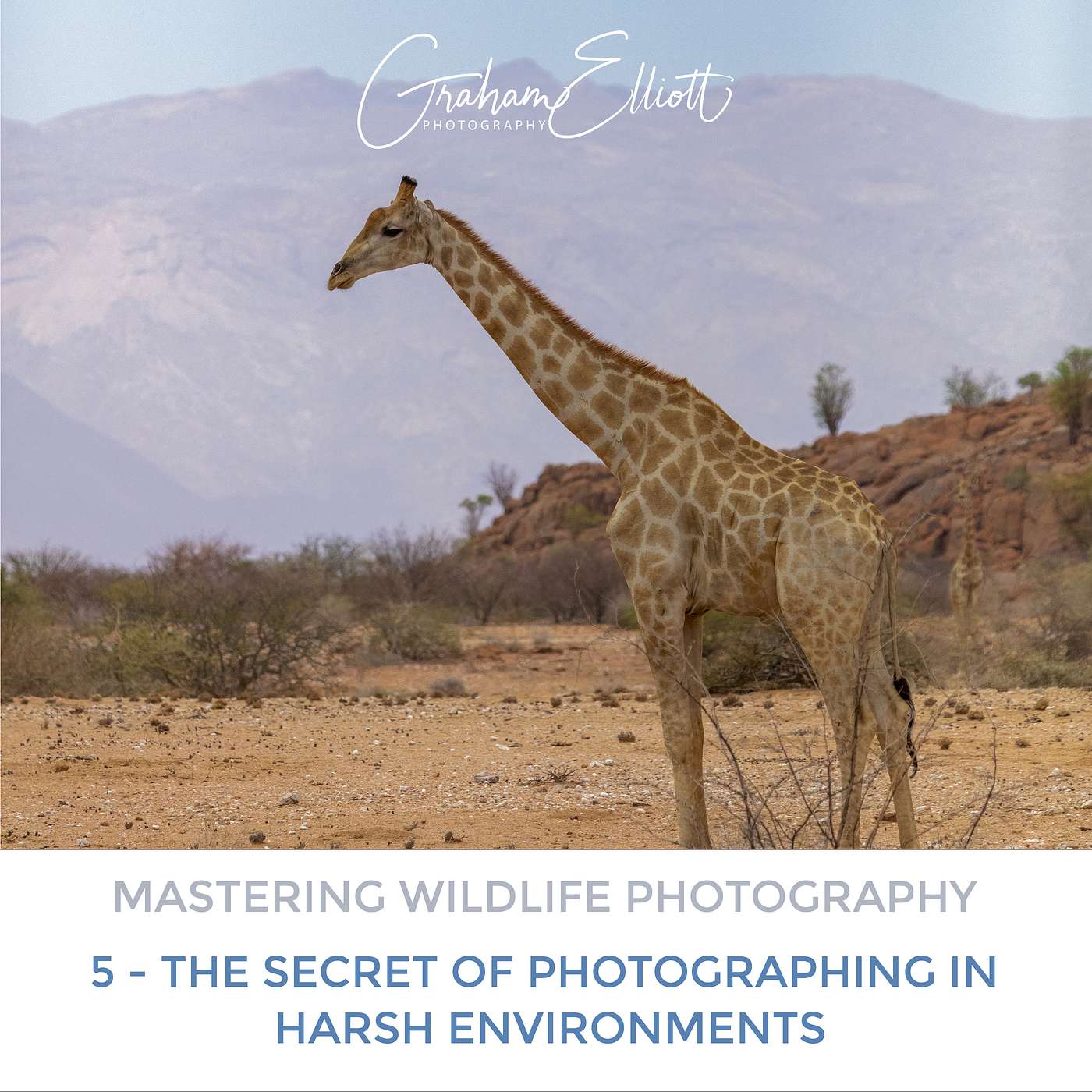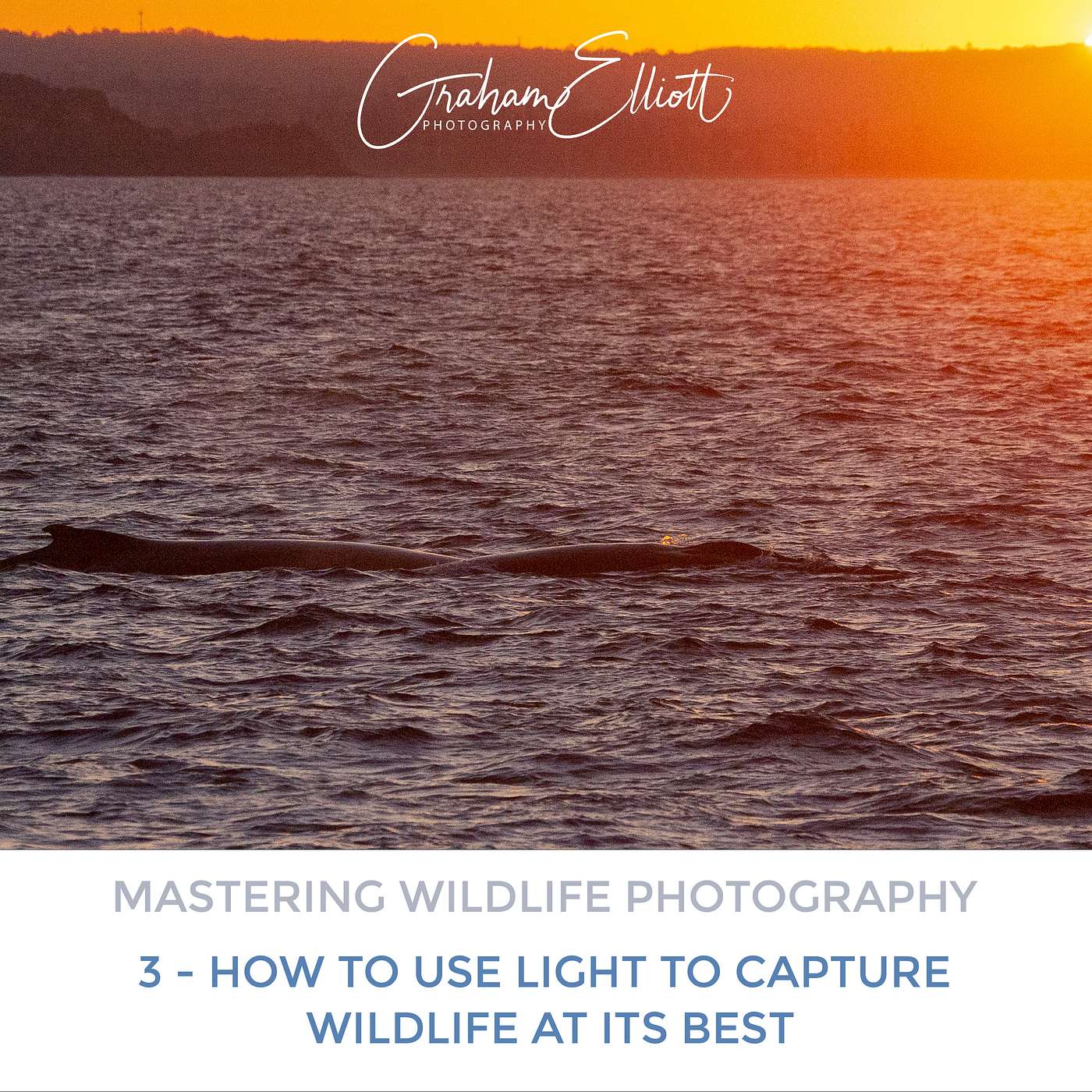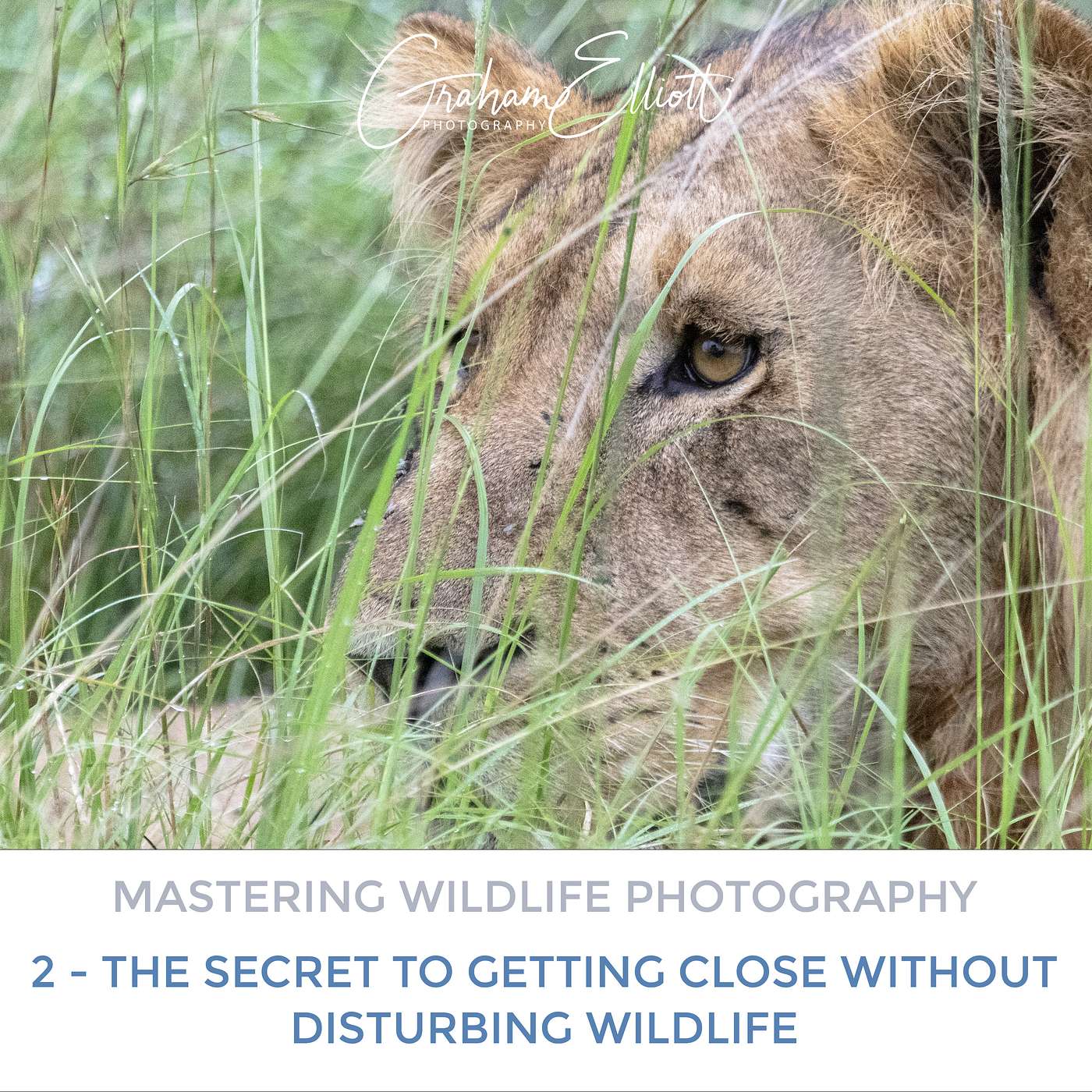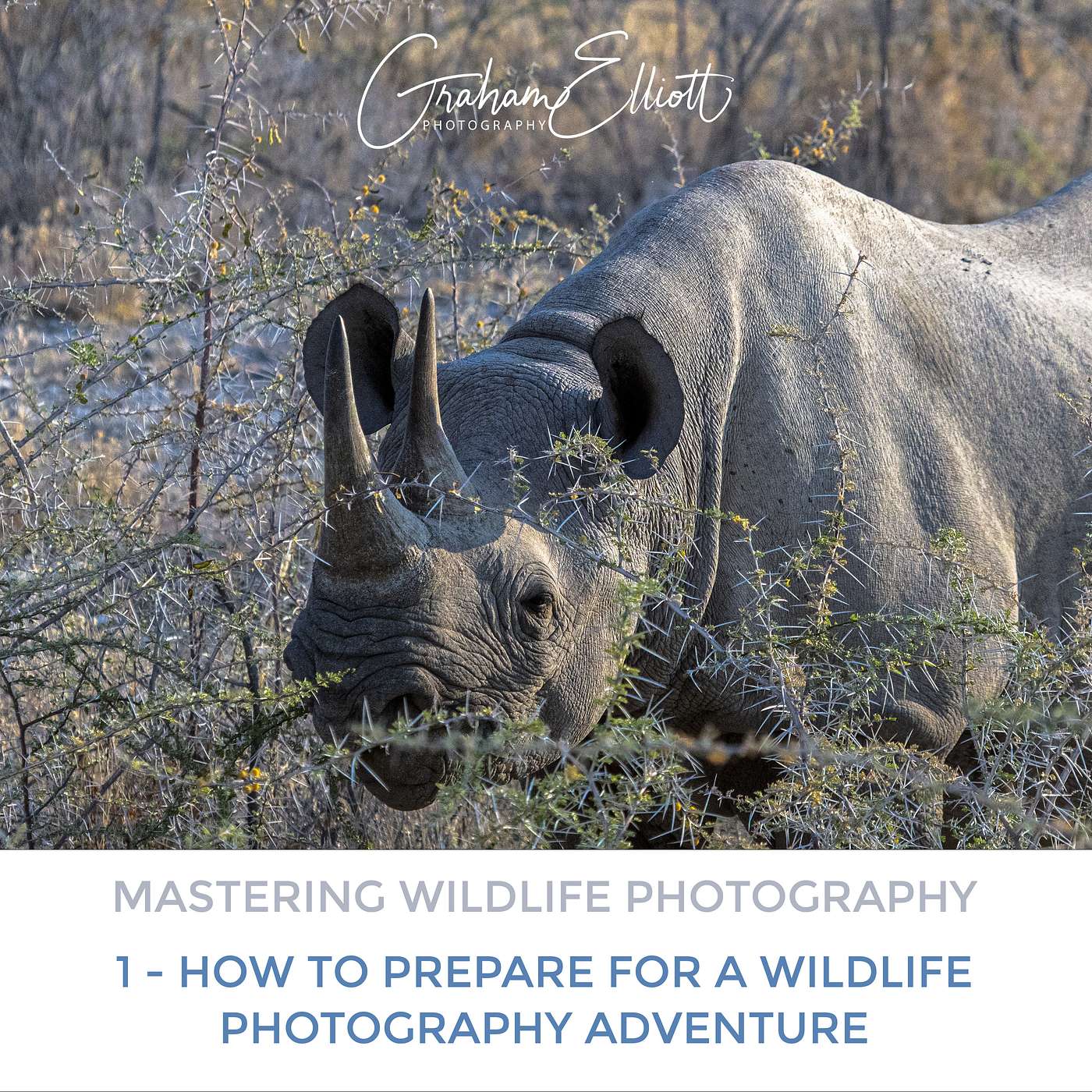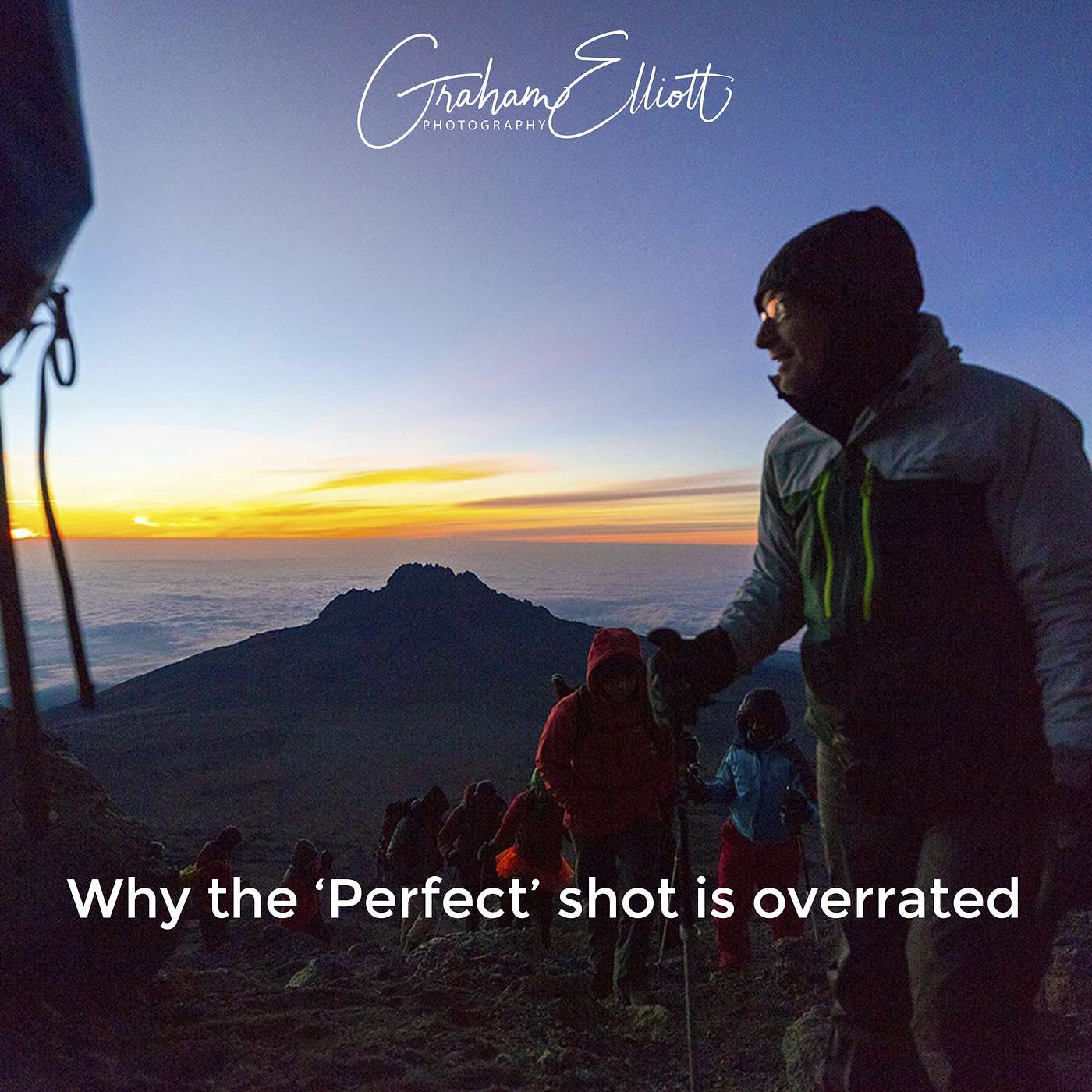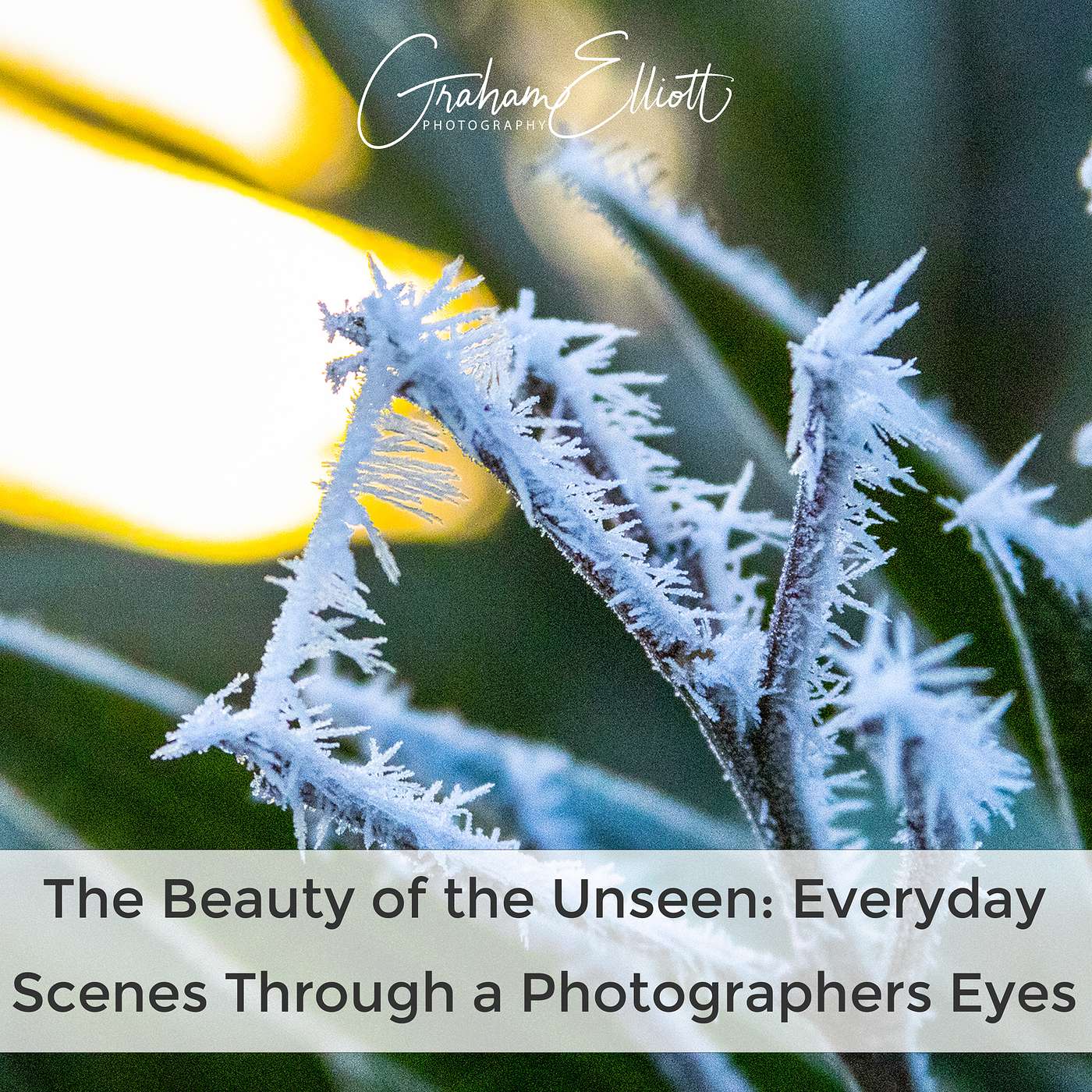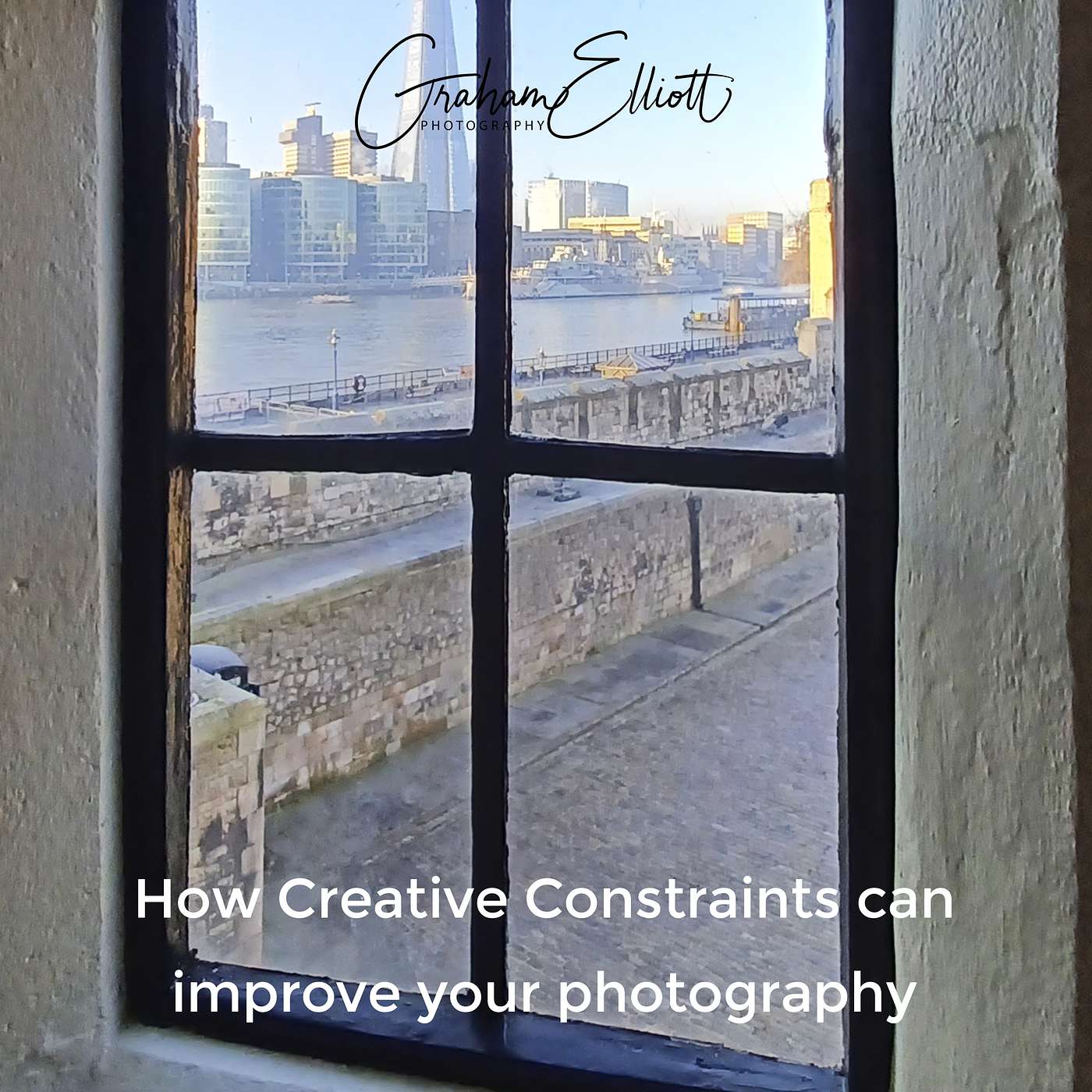Discover Wildlife and Adventure Photography
Wildlife and Adventure Photography

Wildlife and Adventure Photography
Author: Graham
Subscribed: 32Played: 837Subscribe
Share
© 2025 Graham Elliott Photography
Description
A series to help you get great photographs (including wildlife) when travelling. The series includes volunteering and why it provides a serious alternative to traditional wildlife photography trips. It looks at some of the techniques photographers use to find subjects and get great results.
I also share some of my more unusual trips including visiting the wreck of the RMS Titanic and climbing mount Kilimanjaro.
This podcast is for those with an interest in photography, wildlife, conservation and adventure.
192 Episodes
Reverse
Send us a text With so much free material available immediately on YouTube, is there any place for formal photography courses? That’s what I’ll be looking into in this podcast. Please add your thoughts and comments in the comments section, or send an email to graham@ge.photography The Appeal of Free YouTube Learning Advantages: Accessibility & CostBreadth of ContentEntertaining & Bite-SizedLimitations Lack of structure; scattered lessonsQuality varies drasticallyRisk of “l...
Send us a text My guest on this podcast is Jeroen Van Nieuwenhove. Jeroen describes himself as a hybrid photographer, shooting both wildlife and landscapes. In this podcast, we talk about how he started in photography and he shares some of his experiences photographing wildlife in Iceland, where he lives, Greenland and Antarctica. Jeroen shoots with both Canon mirrorless cameras and drones. He describes the difference that using drones has made to his photography and the equipment he currentl...
Send us a text Understanding low-light photography opens up another world of possibilities for wildlife photography. The fact is that a good deal of activity happens once the sun has gone down, and it is very rewarding to be able to share the world that comes to life with people who might not be aware of it. However, as always, there are a few things to remember and some mistakes to avoid. Here are the ten most common low-light photography mistakes: Using Too Low an ISOShutter Speed Too SlowN...
Send us a text A major part of a successful wildlife photography experience is preparation. Doing the right preparation can make the difference between having a great experience and a frustrating one. The problem is that most of us do not have access to wildlife every day, or do we? Getting to know your own area and the wildlife in it can give you access to all the wildlife you need to become confident when you do travel for your big trip. Most of us have our eyes wide open when we visit a ne...
Send us a text AI has already had a big impact on digital photography, and you may be using it without realising it. If you're using a smartphone, AI is driving scene recognition, HDR and exposure, and modes. For DSLR and Mirrorless users, it may well be driving your tracking and autofocus. It is widely used in post-processing to enhance images through noise reduction and the removal of unwanted objects. So what are the considerations for photographers? I'll share some ideas with you in...
Send us a text So you’ve taken your photographs and the adventure is over (for now). So what do you do with your images? This is what we'll look at in this final episode: Sharing Through Social MediaBuilding a Personal Website or PortfolioPrint Media: Books and MagazinesWall Art and Home Décor* CreativeHub recommends the largest print size for each print file you submit. This maintains print quality.Competitions and ExhibitionsEducational and Conservation UsesStock Photography and LicensingRe...
Send us a text You've got the shot, but there's more work to do. The first thing that you might notice is that what's in the camera isn't quite what you saw. And, you might not be happy with the actual image (vs what you had in you mind's eye). This is the starting point for post processing. In this episode we look at the importance of post-processing: Start with basic RAW AdjustmentsEnhancing Detail and Sharpness Colour Grading for Mood and StorytellingEthics of Editing Wildlife Photos&...
Send us a text In my opinion, portraits can be the most powerful way for someone to connect with an animal. And possibly feel a real connection with it for the first time. So, mastering animal photography is possibly the most important aspect of wildlife photography to master. In this episode we'll look at: What is a wildlife portrait?Capturing Emotion & Personality Field Techniques & Ethics Storytelling Through Portraits Common Challenges & How to Overcome Th...
Send us a text Wildlife doesn’t always live in comfortable places. Sometimes, the most incredible images come from the toughest conditions: cold, blistering heat, or sudden storms. Today, we’ll uncover the secret of thriving in those environments. These conditions test photographers both physically and mentally. But fewer people are willing to endure them, so you have a great opportunity to shoot unique images. In this episode, we'll look at: Preparation Protecting Your Gear S...
Send us a text In this episode, we'll take a look at the best ways to capture fast-moving action. The Challenge of Wildlife Action Shots Camera Settings for Freezing MotionAnticipating the ActionPanning & TrackingGear ConsiderationsCreative Motion ChoicesShare your experiences and images in the Facebook Group. Next time, we’ll talk about how to handle harsh environments. Check out my PDF “A Brief Guide to Wildlife Photography” for more ideas. Please remember to LIKE and SUBSCR...
Send us a text This episode is about using light. Using it well can make the difference between a magical shot and one that is flat and uninteresting. Here's what I'll cover in this episode: The Role of Light in Wildlife Photography Golden Hours & Blue HoursMidday Light ChallengesBacklighting, Side Lighting & Front Lighting Weather & Light Conditions Camera Settings for Light Share your experiences and images in the Facebook Group. Next time, we’ll ...
Send us a text Last time, we looked at preparation and the important things to consider before you go. In this episode, I share some of the ways that you can get ‘close’ to wildlife ethically. Here's what I'll cover in this episode: Ethics Understand animal behaviour Stealth techniques Using Distance & LensesLet wildlife come to youNext episode: Next time, we’ll look at how to use natural light effectively. For more information: Check out my PDF “A Brief Guide to Wild...
Send us a text This is episode one of eight, where we will take a deeper dive into how to take great wildlife photographs. We’re going to start with preparation. Good preparation can make all the difference between a successful shoot and a complete disaster. Here are the key things I'll cover in this episode: Research & Planning Gear & Equipment Health & Safety Mindset & Patience Next episode: Next time, we’ll dive into the secrets of getting close to...
Send us a text Do you ever feel stuck, endlessly tweaking photos, searching for that 'perfect' look that seems just out of reach? You're not alone. We've all been conditioned to believe in a singular ideal of photographic perfection. But what if I told you that once you understand the truth about the 'perfect shot,' you'll not only take better photos but also find more joy in your photography? Let's discover why. There are two photography quotes that I particularly like: Ansel Adams: “There i...
Send us a text I used to use Circular Quay in Sydney quite regularly, but never noticed the little dolphins in the railing by the ferry terminal. The first part of photographing the “unseen” is to see it! And we covered that to some extent in the last podcast. If you’ve tried the exercises from the previous podcast, you may well have found that there are a lot of details in your everyday environment that you’ve previously overlooked. And, no doubt, some of them have a beauty all of their own....
Send us a text Have you ever walked past something beautiful without even noticing it? If you have, you’re not alone, and this is a skill that separates great photographers from the people who take snapshots. Great photographers really look and see what is there. And it goes beyond simply seeing something. They take it further and apply the important elements that make up a great photograph: They’re looking at the light, perhaps how it changes, where it is coming from, lines, emotions a...
Send us a text I often recommend that you practice as often as possible to improve your photography. But what do you do when you hit a mental blank? One idea I suggest in this podcast is to shoot a series of photos, or a collection. And, to make them more coherent, and to challenge yourself, I suggest you use a Creative Constraint. So what is a Creative Constraint? Here are some examples: Technical: Shoot only in black and whiteUse only one lensLimit yourself to manual focus (or full manual o...
Send us a text If you’re listening to this podcast, it’s probably safe for me to assume that you want to take great wildlife photographs. So what are the things you need to think about? I’ve tried to run through an almost step-by-step guide based on my own recent experience of photographing wildlife in Zimbabwe, Australia and Finland. Camera: Take the body and lens (possibly plural) that most suits your needs. And think about ancillary items; storage, battery charger, mains adaptors, USB char...
Send us a text Kara Sheldon is the ecologist and one of the directors of the Southern Africa Field Conservation Project. SAFCP was formed following the participation of the directors in a local conservation project largely run by Dean and Justine McGregor. I joined it as a ‘guinea pig’ for the first run of a conservation programme that they hope with contribute significantly to local conservation efforts. The project is located at the Woodlands Community Reserve, located just outside the town...
Send us a text A few podcasts ago I spoke about what to think about when buying a camera. However, most of us carry around a smartphone and some of these cameras can outperform pro cameras. So here are some tips to help you to get the most from your smartphone: Keep your lenses clean!When you have your subject where you want it, tap on the subject on the smartphone screen. That tells the camera where to focus and you should also see a slider control appear. Use this to make the image brighter...


